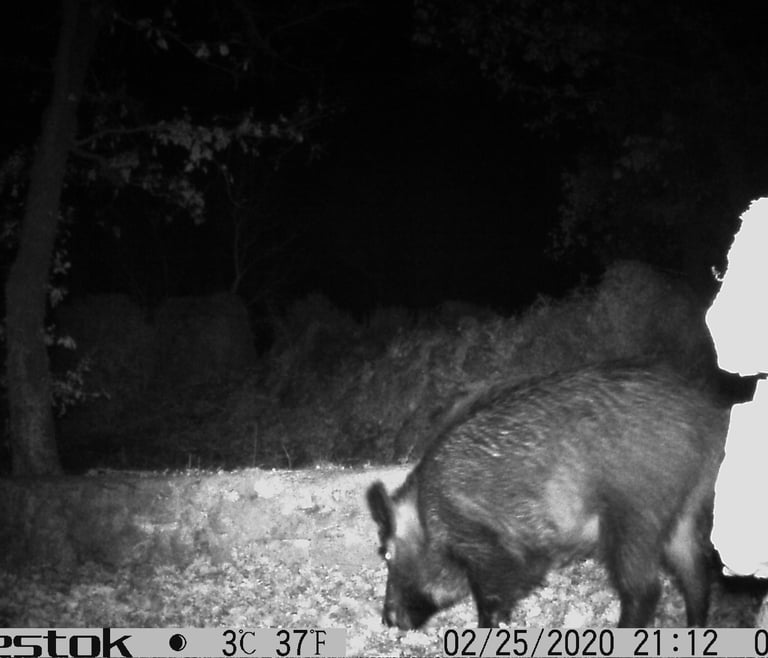
Where the Waters Meet
An uncertain walk.
CLIMATE CHANGE SEASONS
Joan
2/24/20255 min read
Yesterday dawned fair. That made a pleasant change, as we have had an unusual amount of rain recently. But as it was Sunday, it meant that the hunters might well descend on our forest. Sure enough, at breakfast time, I heard their convoy of vehicles climbing up the road that passes by our property, and leads high into the forest. And so, we decided to walk in the hamlet of Gourgas instead, as we often do on Sundays. There had been another 'battue ' there last week, so this week we should be safe. But there was one other potential hazard that we hadn't taken into account as we set off from the village church towards the cliffs of the Cirque du Bout du Monde that tower 530 metres high above the picturesque hamlet of Gourgas. But more of that later.
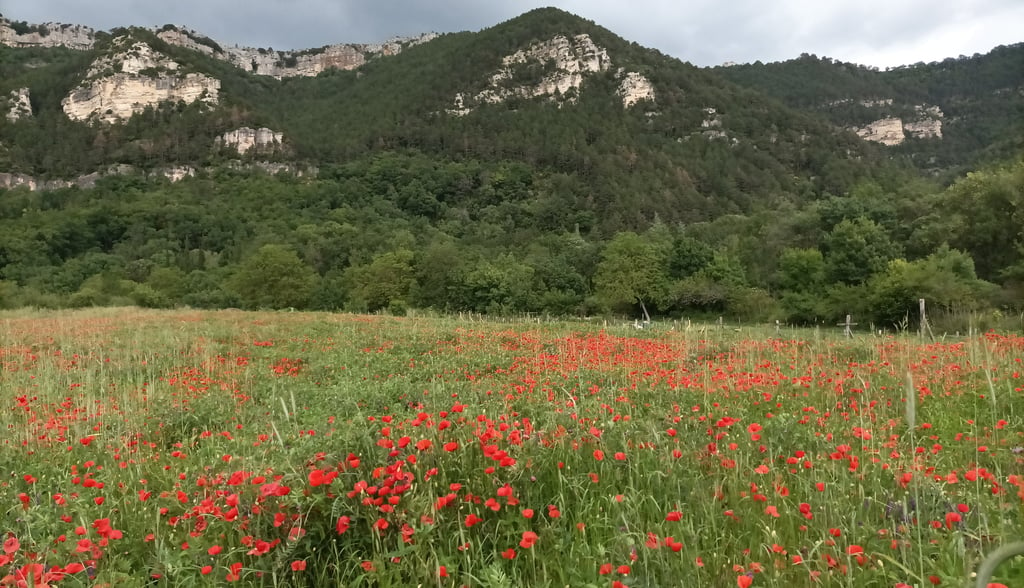

These cliffs merit their name, for Gourgas really is at the 'end of the world.' The road stops there, and can go no further. But there is more than meets the eye, for behind this magnificent limestone escarpment, lies a myriad of caves, the largest of which is called La Grotte du Banquier, which was first discovered in 1933. Local legend warned of fairies and bad spirits who guarded the entrance, and those who dared to venture were said never to return. But Paul Rudel, a local historian, commented that these tales were invented to discourage local children from going there. An other village tale speaks of a "banquier" (banker) who lived in Gourgas. During the Second World War he is said to have hidden his fortune there(hence its name.) Nowadays one can take part in a guided tour of the cave with expert speleologists. This lasts around 5 hours, and during that time you will see beautiful vaulted roofs, and many stalagmites and stalactites. Much of the cave is under water, and to explore it in its entirety one has to pass through submerged passages (siphons) using underwater diving apparatus. Sadly, you will find no gold.
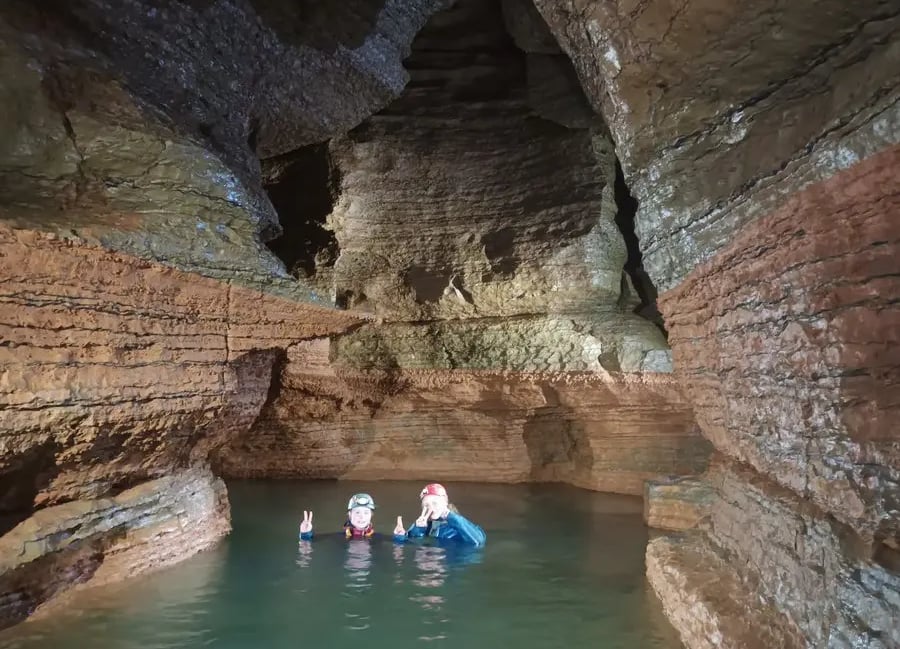

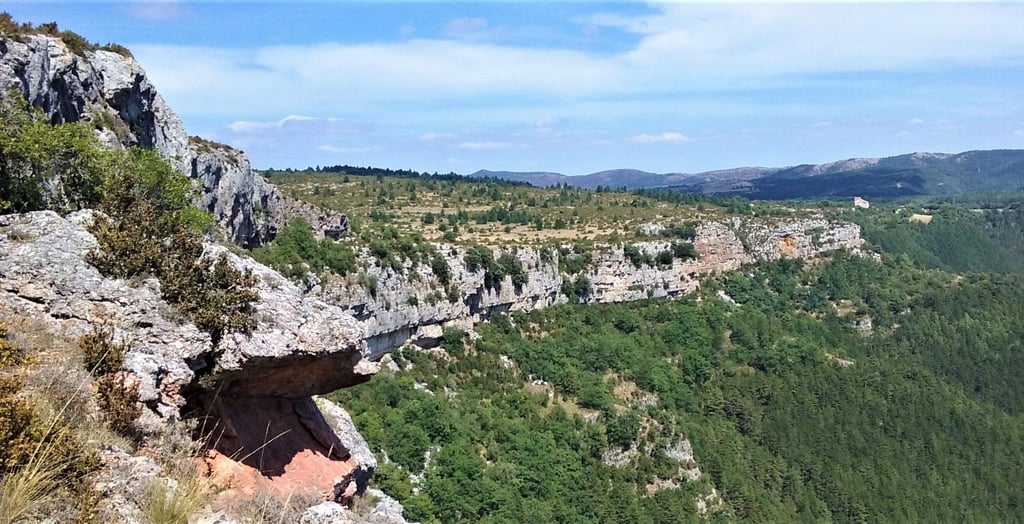

Because there is so much underground water stored in these cliffs, Gourgas is well endowed with streams and waterfalls which spout from the mountain. That is why I love to visit in summer too, for the rivers there never dry up. Four small streams merge into one before forming the River Brèze.


But we didn't suspect that day, as we set off for our customary walk, that this could lead to a potential problem. From the church we headed up hill, always keeping the cliff ahead...a glorious sight. We passed the local olive grove, and looked down on the hamlet with its cluster of old houses under the cliffs, and a number of newly built houses which run along the other side of the valley. But as we got closer, the sound of the river grew loud, and we began to wonder whether we should continue. For indeed, we had had an awful lot of rain, and the river sounded very full. On reaching the edge of the village, we would have to cross the ford., which becomes impassable if the water level is too high. We decided to continue, but as the sound of water got even louder we began to doubt the wisdom of this. The final part of our route took us downhill , alongside a deep ravine that is normally dry. But today a busy stream ran over the stones. We felt sure now, that we had made a bad decision. If we had to retrace our steps , there would be a long climb back uphill. We ventured on, not daring to look. But when a car passed us going in the opposite direction, we knew it would be O.K. The ford was, in fact, just traversable. Phew!
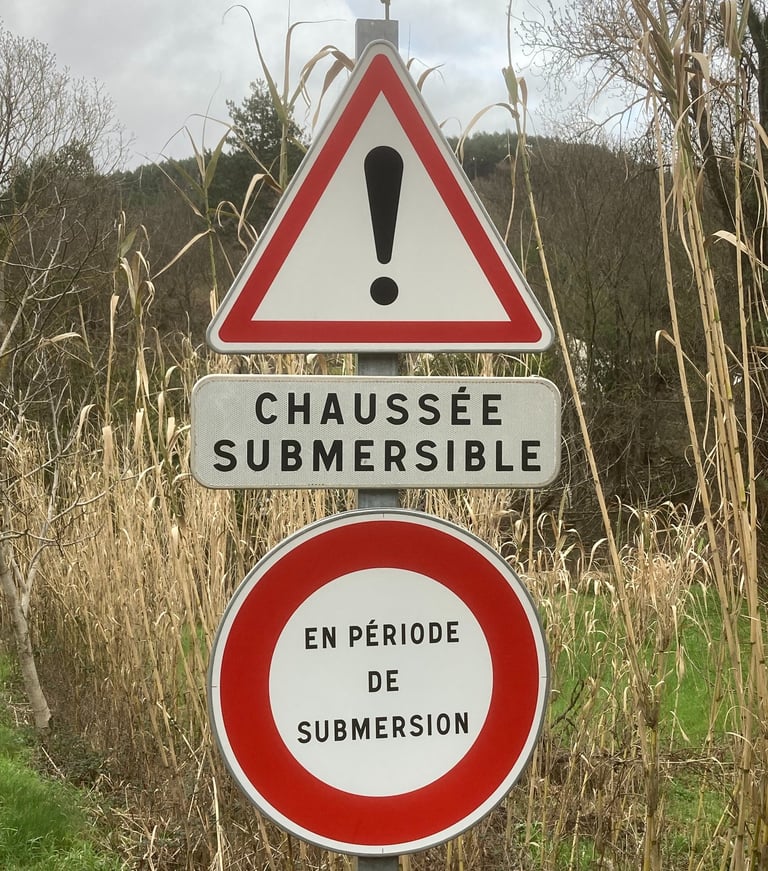

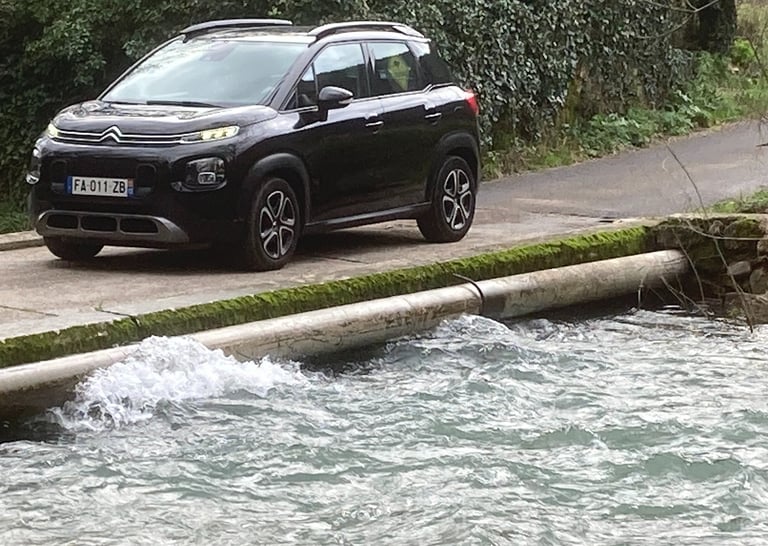

We returned along the valley, passing by a friend's house on the way to feed their fish. Then a short climb , back up the hill to the church at St Etienne en Haut. Here stand the old walls of the chateau which is now in ruins, save for the cellar. This has been re-roofed, and is used by the local hunting association for their gathering after the hunt. It is here that they butcher the sanglier and store it in freezers. This freezing is important, as it kills all parasites before the meat is cooked. The hunt was obviously over, for as we returned to our car, the car park was full of their giant 4x4's, with cages on the back for their hunting dogs. Nearly all of these hunters come from farther afield. They are rarely locals. As one elderly resident who lived close by( a nephew of the renowned local historian Paul Rudel) told us, they 'give 'ni merde ni bonjour.' Perhaps I should not repeat this phrase. But suffice it to say , he did not rate the hunters too highly. We are not alone!


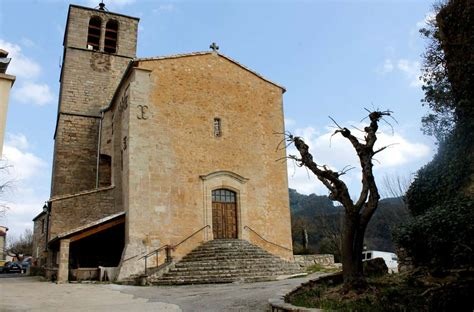

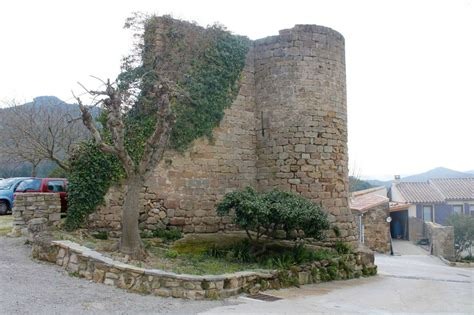

We readily anticipate the end of the hunting season. These dates vary according to which bird or animal is hunted. However, two highly significant dates for us are February 28th, when the shooting of all deer must stop, and March 28th when the sanglier season will be over for the year. After that day we will have the forest to ourselves( save for the sanglier and the deer, and many other animals and birds, who I am sure will be very happy about it too.)
